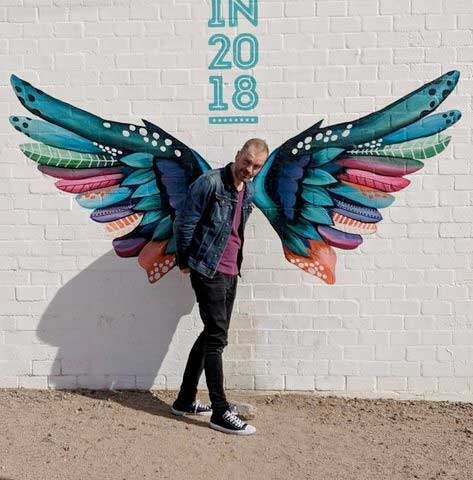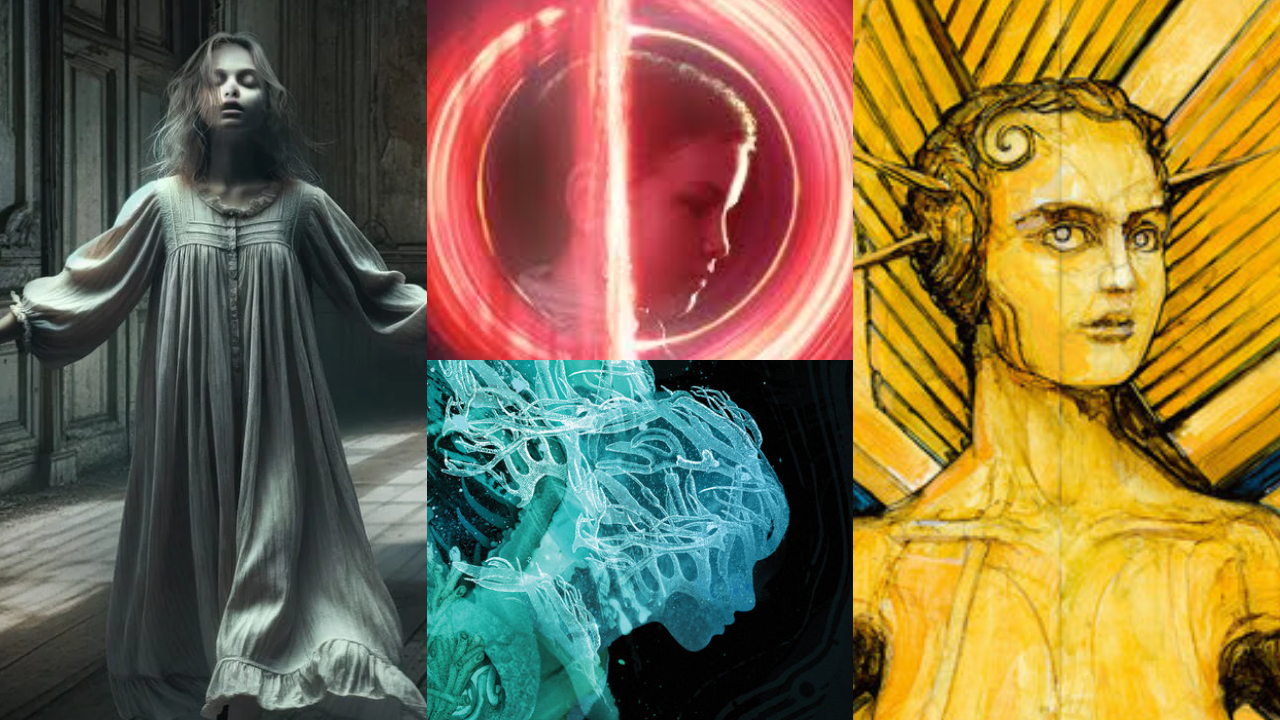Human bones, pagan rituals and ancient armies: inside the cult of Heilung
How metal embraced pagan-folk mystics Heilung
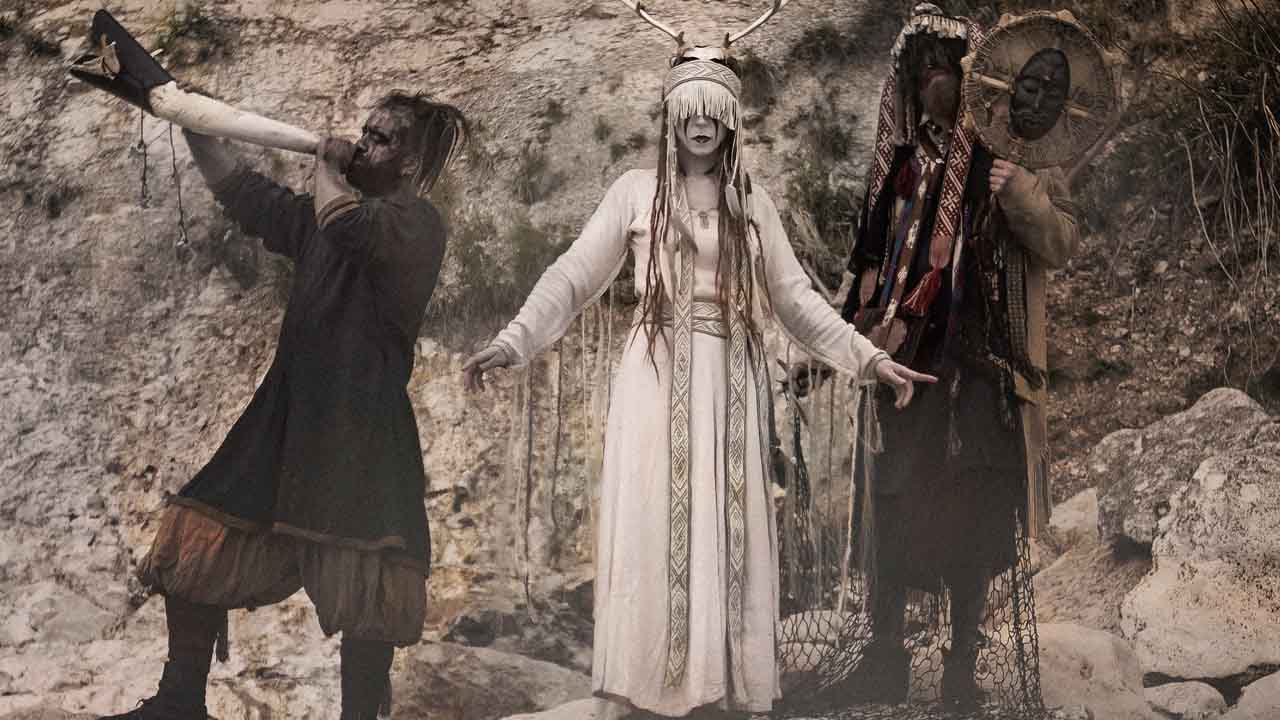
If you need to get your hands on some human bones, Kai Uwe Faust can point you in the right direction. Back in 2015, he and his bandmates in Heilung decided their debut album, Ofnir, would benefit from some unique percussive sounds, and figured the remnants of a skeleton would do the trick. Luckily, Kai – as Heilung’s co-vocalist and unofficial Head Of Spirituality – had come into possession of some.
“I’m a tattoo artist,” he says, his voice the embodiment of cold German menace. “I have connections. People who don’t pay…”
He lets the sentence hang. There’s an uncomfortable silence. Then he laughs and the spell breaks. “No, they came from the university.”
It felt too much: the screams were difficult to listen to. It was scary.
Maria Franz
It transpires that it isn’t illegal to buy human bones in Denmark, Kai’s adopted homeland. He purchased his when the medical department got rid of them in favour of plastic casts. “I got a skull and a couple of bones,” he says. “In Christian culture, when you’re dead, you have to be buried and that’s it. In other cultures skulls get remade into sacred drums, or bones are carved into ornaments. That’s the way to deal with one of the most important aspects of life: death.”
On one hand, it’s a disappointingly mundane answer. On the other… well, how many bands use forearm bones for drumsticks and skulls for percussion?
The correct answer is: just the one, and that’s Heilung. Yet, inconceivably, these skeleton-rattling, antler-wearing pagan-folk mystics have become the most unlikely and unique phenomenon of recent years.

Christopher Juul, Heilung’s Danish-born producer and multi-instrumentalist, likens his band’s unexpected upwards trajectory to “a beast that is getting bigger and bigger. And you have to feed it bigger and bigger pieces of meat to keep it happy and stop it eating you.”
Sign up below to get the latest from Metal Hammer, plus exclusive special offers, direct to your inbox!
Christopher founded Heilung with Kai and Norwegian co-vocalist (and Christopher’s partner) Maria Franz in 2014. Their expectations back then were minimal. “I thought it would be a small niche little thing,” says Maria. “Really it was just an experiment for the sake of playing around with this dark material that Kai came up with.”
That experiment has become something else entirely. Heilung have materialised in metal’s collective consciousness like a spirit, despite possessing few of the traditional characteristics of a metal band. Their live performances aren’t so much gigs as communal rituals, complete with warriors, bonfires and rune-casting. The two albums they have made to date, 2015’s Ofnir and 2019’s Futha, pulse with mind-altering tribal rhythms and wordless exhortations to long-gone gods – “amplified history”, they call it. Their songs sound like transmissions from other planes (if Kai, who claims to travel between worlds, is to be believed, then they sometimes are).
On this particular plane, it’s a chilly December evening and we’re speaking via the distinctly 21st century medium of Skype. Maria, Kai and Christopher are sitting in Heilung’s studio, their beanies and hoodies significantly less forbidding than the antlers and robes they wear onstage. They’re joined occasionally by a small black dog that bounds in front of the camera. This is Luna: half poodle, quarter pug, quarter chihuahua. “Our new bandmember,” says Maria.
The seeds of Heilung were sown in a place just like this, their beginnings literally shrouded in smoke. “It was in the old studio,” says Kai. “Christopher was still smoking then. You’d open the door and it was just a fog of cigarette smoke. And beer and pizza.”
Kai met Christopher and Maria via the Viking re-enactment scene, in which all three were involved. He had moved from Germany to Denmark in 2010 to pursue his career as a tattooist specialising in Nordic designs. He grew up in a devoutly Christian household, before embracing paganism in his teens.
Kai was a storyteller and a poet, and he wanted to send his stories and poems he was reading to friends back home. He struck a deal with Christopher: the latter would record Kai’s stories and poems and set them to soundscapes; in return, Kai would tattoo him (an offer that still hasn’t been taken up). “But it was not satisfying,”’ says Kai. “There was a point where he said, ‘Can’t you sing something?’”
Maria wasn’t involved at the very beginning, but she witnessed it first- hand. “This was something different,” she says. “It felt too much: the screams were difficult to listen to. It was scary, but then I let go and I was drawn in.”
It was only when Maria became the crucial third spoke in the wheel that Heilung began to properly take shape. “It was never, ‘Let’s sit down and make Heilung’,” says Christopher. “It was, ‘Let’s make something. And it became a thing of its own. The beast.”
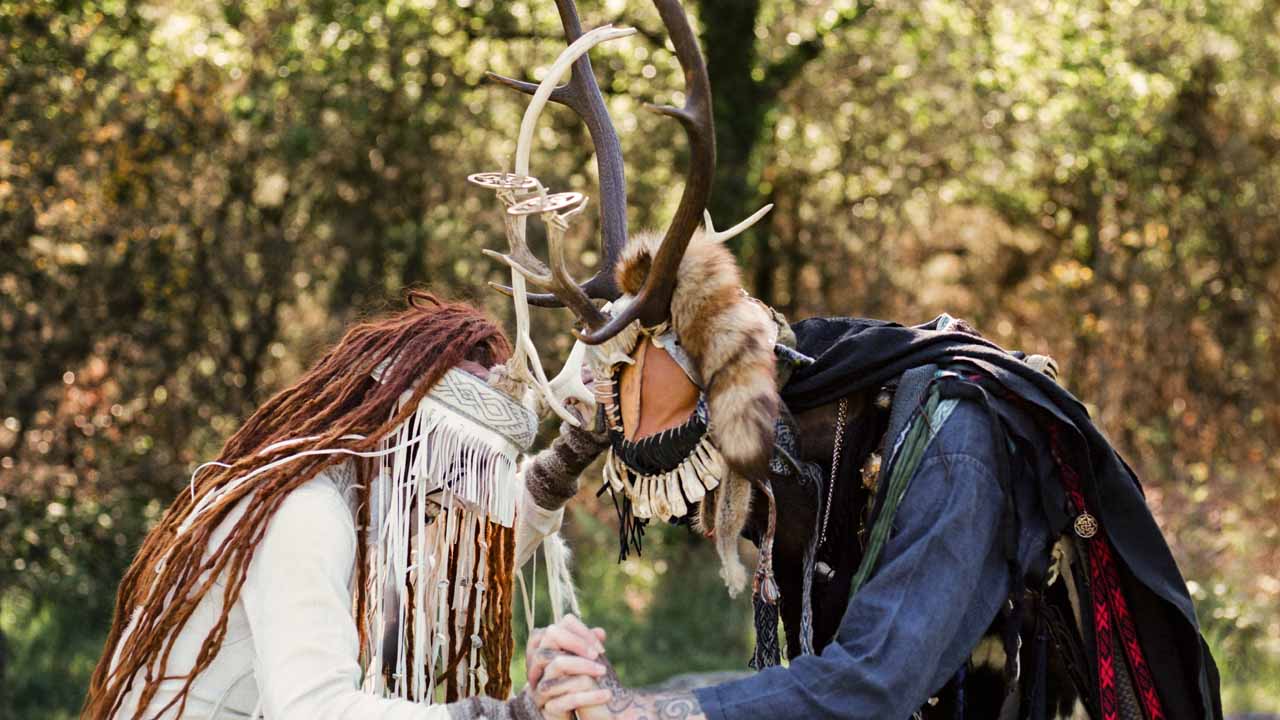
The first the world knew of Heilung was when they self-released Ofnir in 2015. That album featured an array of unusual instruments, including a Hindu ritual bell, goatskin drums and, of course, Kai’s bones. The majority of the sounds they created were captured on the first take. “There was magic to it,” says Christopher.
Ofnir made ripples within re-enactment scene circles, as well as among people who knew Christopher and Maria from their other bands, the traditional Nordic folk trio Songleikr and the more prog-tinged Euzen. A few clued-in metal fans drifted towards it, too, led there by kindred spirits Warduna, but the signs pointed towards cult-hood, and nothing more.
All that changed on August 5, 2017. That was when Heilung played their first gig, at medieval-themed Dutch festival Castlefest. Christopher had initially resisted the idea of a Heilung live show, reasoning they could never replicate the full ritualistic experience they were aiming for onstage. But there, in front of 10,000 people, they performed a show, titled Lifa (‘Life’), that was both spectacularly theatrical and profoundly primal. “What we were trying to achieve was not a concert,” says Christopher. “It was a ritual.”
He heads to the back of the studio and returns with a sheaf of A3 pages featuring crude felt-tip designs and stick figures – his very first sketches for the stage show. It took a year of planning and some intensive rehearsals to make it reality. “Something was put in motion,” he says. “Heilung definitely had its birth that night.”
Castlefest was a tipping point for Kai: it was the first time he had performed onstage with any band. “I got literally pushed out there, and something else took over,” he says. “I don’t remember much of it, other than it was over within a second.”
It was a tipping point for Heilung, too. The Lifa show was released as an album and a film. To date, the latter has been viewed 5 million times on Youtube; over 23 million people have seen the clip for the song Krigsgaldr. These were followed by an avalanche of reaction videos, ranging from the admiring to the baffled, posted by everyone from metalheads to hip hop fans.
“There’s something about tribal music and the world of ancient beats,” says Maria. “It’s a heartbeat, and the heartbeat is common to every single human being. It speaks to people, no matter what their identity or their culture.”
In the three years since Castlefest, something strange has happened to this most retro of bands: Heilung have bled into popular culture. Their songs featured heavily in a key episode of the beards-breasts-’n’-bloodshed TV show Vikings and they also soundtracked a Game Of Thrones trailer. “They had put all the death scenes to our music,” says Christopher proudly of the latter.
Other, less obvious offers have come in. They’ve recently been working with games company Ninja Theory, on Senua’s Saga: Hellblade II, a dark fantasy action-adventure. And then there was the time they were contacted by a director who wanted to use their music in a TV ad for a collaboration between Adidas and on-trend fashion designer Alexander Wang.
It’s my dream to play the Colosseum. It would be nice to take Rome for the Vikings.
Christopher Juul
“We thought, ‘What the fuck does Heilung have to do with a rubber shoe?” says Maria. “But the director wrote to us and said he had made an art movie based on the imagery he had made for the commercial, and he felt our music would lift it up. That made us feel better about it.” (They allowed their music to be used in the ad, though free high-end sneakers sadly weren’t forthcoming.)
Not everyone loves them so much. One critic called Ofnir the most boring thing he had ever heard. “He said, ‘The whole album sounds like an everlasting black metal intro’,” says Kai, laughing. Others have criticised them for using animal hides as drum skins and bones as instruments. “‘They should use plastic, as it’s better for the animals’,” says Christopher with a roll of his eyes.
Sometimes real-world concerns intrude in a much more serious fashion. Heilung aren’t the only ones to use pre-Christian images such as the prehistoric sunwheel; those symbols have also been co-opted by the extreme right and neo-Nazi groups. They’re understandably keen to distance themselves from the taint of white supremacism.
“We don’t mingle with modern politics,” says Christopher sharply. “We deal with a time that is a lot older. Heilung means ‘healing’. We want to bring people together, not drive them apart.”
In January 2020, after a black female fan was racially insulted at a Heilung gig in New York by white audience members, the band’s response was unequivocal: “Apparently some people attended our ritual with the idea that Heilung is only for white people. This is not the case. Heilung is for ALL people… Anyone trying to fit the band into a political agenda of any sort has clearly not understood what Heilung is about. That includes but is certainly not limited to white supremacy. We do not tolerate display of divisiveness and hate in the audience at our rituals.”
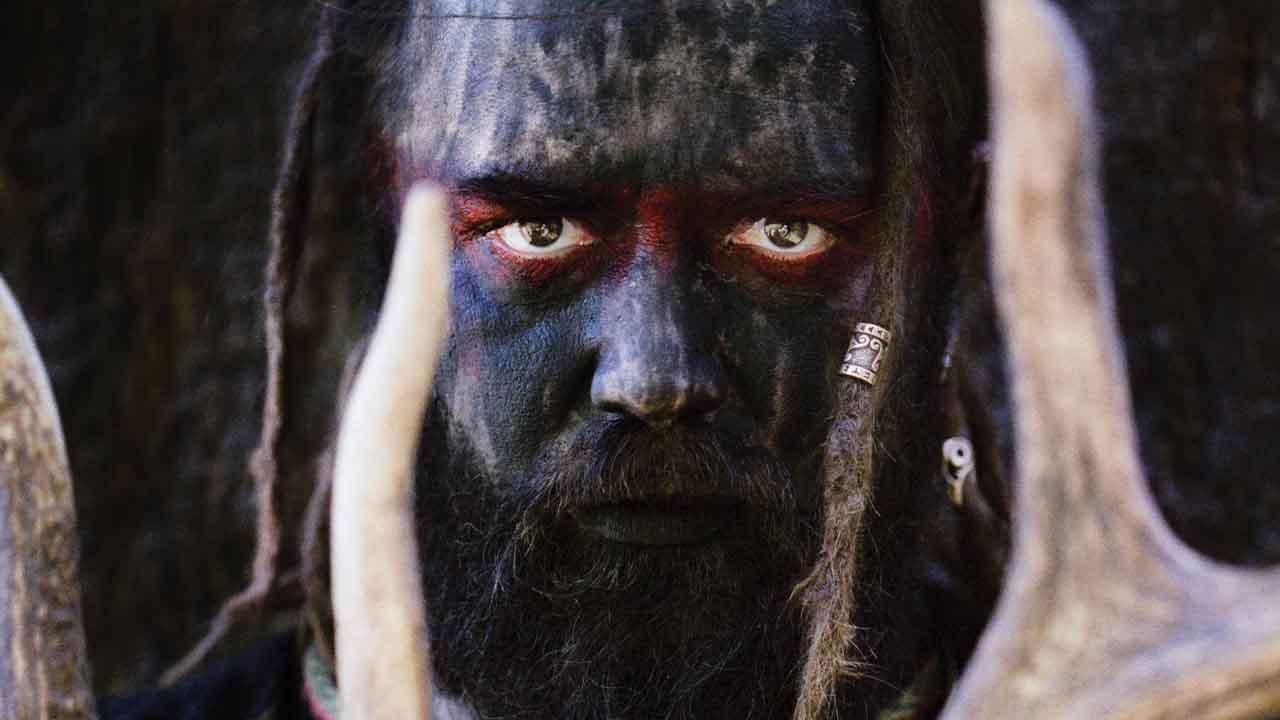
There’s been one unexpected knock-on effect of Heilung’s burgeoning success. They’ve gone from being a band who had no intention of playing live to a band who gig regularly. At the last count, the Heilung entourage numbered 24 people, including extra musicians, roadies and additional Viking warriors. The idea of trying to carry their homemade instruments onto aeroplanes in hand luggage is long gone. One day Christopher wants them to get their own plane. “With shields on the sides and horns coming out of the window, with our warrior snail behind.”
Part of Heilung’s success is down to their uniqueness as a ‘metal’ band - what they do is a long way from the genre’s grand pantomime. But conversely, they’re part of a broader web of pagan culture that stretches not only outwards to take in TV shows, movies, books and videogames, but also backwards, following a thread that runs through centuries and millennia of music, right back to the very first primal beat. There’s a fundamental recognition of what they’re doing among everyone who listens to them.
“People say, ‘Who began the pagan scene?’” says Kai. “It was the ones who lived a thousand years ago. We’re all part of something much bigger.”
If you want an illustration of just how dedicated Heilung are to the existential act of being Heilung, here’s one. A social media post showed them recording themselves on a wooden bridge in the Danish countryside. They wanted to recreate the sound of a marching army. “Specifically on this bridge,” says Christopher. “It has been reconstructed exactly like a bridge from the Viking age. It has no nails, just pegs. We were, like, ‘We need that sound.’ Spears stomping on that bridge, heavy boots walking…”
Maria: “We counted that we needed to walk across it a thousand times to get the army we wanted.”
And did Heilung walk across it a thousand times? Christopher thinks. “Well, we stomped for quite a while.”
There was a point to the stomping: it could well end up on Heilung’s next album. It’s early days, but plans are fermenting for the follow-up to Futha, tentatively pencilled in for 2022. “It’s going to be a monster,” says Christopher. “A double album? It’s very likely. Certainly the biggest we’ve ever done.”
Thinking big isn’t confined to the studio. It’s a mark of the place Heilung are in that their autumn/winter 2021 tour includes a show at London’s 5,000-capacity Brixton Academy as well as an appearance at the fabled Red Rocks Amphitheatre in Colorado.
And they’re already thinking beyond that. They want to play shows in the round in the middle of venues, to more accurately represent the ritual aspect of their gigs. They plan to set up their own festival, complete with Viking-style encampment. They envisage playing outdoors on burial mounds, or in forests, or within ‘stone ship’ monuments. “It’s my dream to play the Colosseum,” says Christopher. “It would be nice to take Rome for the Vikings.”
“But the physical place is not important,” says Kai, serious for a moment. “It’s the mental place. Where we are, and where we bring people, that can be anywhere.”
For the moment, Heilung are stuck in Christopher’s studio. Things could be worse. “Every day staying with these guys in this bubble in this studio is a day worth waking up to,” he says.
What 2021 will bring, only the gods know. Heilung’s journey has taken millennia to bring them to this point. “But I think we’re still at the beginning, in a way,” says Christopher. “We are still figuring out what this beast is.”
Dave Everley has been writing about and occasionally humming along to music since the early 90s. During that time, he has been Deputy Editor on Kerrang! and Classic Rock, Associate Editor on Q magazine and staff writer/tea boy on Raw, not necessarily in that order. He has written for Metal Hammer, Louder, Prog, the Observer, Select, Mojo, the Evening Standard and the totally legendary Ultrakill. He is still waiting for Billy Gibbons to send him a bottle of hot sauce he was promised several years ago.
